One of the most renowned American artists in history has a very simple philosophy when it came to his art. He once stated that “the whole answer is on the canvas.”
This is remarkably not the case in a Realism painting that he sold rather quickly after it was first displayed during an important event in his career.
In this article, we take a closer look at some of the most interesting facts about Automat by Edward Hopper, one of the artist’s most fascinating works.
1. It was completed shortly after Hopper experienced his artistic breakthrough
Edward Hopper (1882-1967) produced some of the most iconic artworks in American history. His career didn’t get a flying start, however.
During the first decades of the 20th century, he was forced to work as an illustrator to sustain himself financially and he quite literally hated it.
He even became disillusioned by oil painting that he started producing etchings in 1915 and completed over 70 by 1923.
His career took a different turn when he re-met his future wife Josephine Nivison (1883-1968) in 1923, a fellow artist whom he had studied years earlier.
She was more sociable and had connections that allowed him to exhibit his first works at the Brooklyn Museum in 1923. The museum bought “The Mansard Roof” for $100 and it was the start of a successful career.
Hopper completed Automat in 1927 and it’s one of his most famous works today.
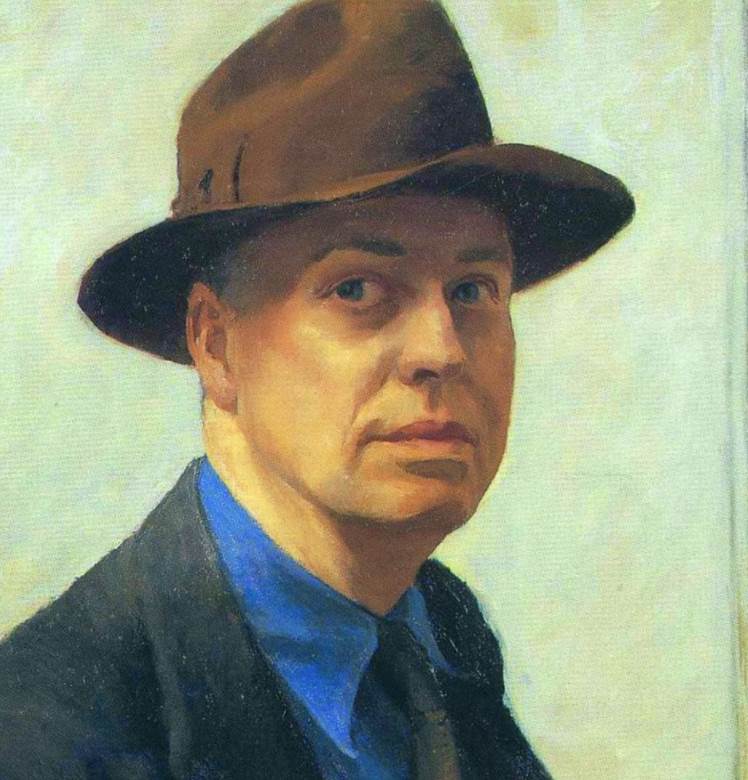
2. It depicts a woman having a cup of coffee in a fast food restaurant
Hopper strictly painted from real life and often included windows in his works. This is also the case in in this painting which depicts a woman sitting inside an automat.
This type of fast-food establishment where you can buy drinks and food from vending machines was a relatively new invention at the time. The first automata had only appeared in 1895 in Berlin.
The first automat in the United States was opened in 1902 in Philadelphia. The success of the initial automats resulted in the spread to other cities all around the country.
Because nobody is there to serve drinks or food, it’s possible to be completely alone which appears to be the case for the girl in Hopper’s famous painting.
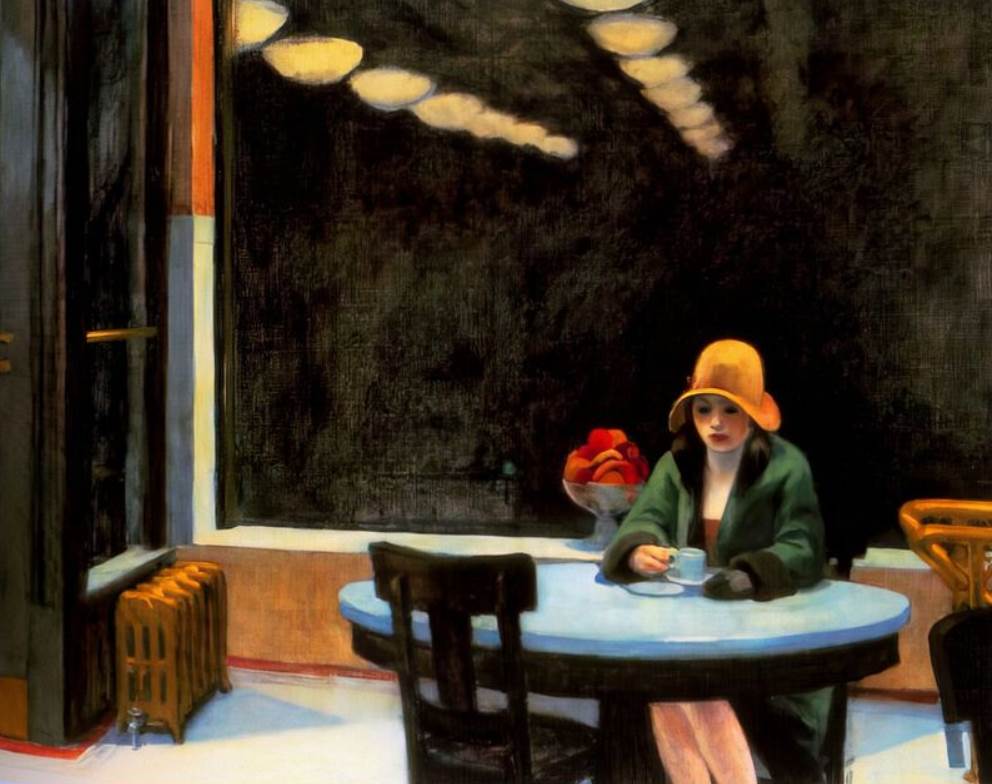
3. Hopper’s wife Josephine was the model but he made a few changes
Josephine Niviline (1883-1968) met Edward Hopper again in 1923 and the two got married the year later in 1924. She was highly influential in Hopper’s career and came at just the right time in his life.
She also served as the model for many of his paintings, including this one. He did, however, make a few changes to the girl so she doesn’t exactly look like Jo looked at the time.
Josephine was 44 at the time the painting was completed in 1927 and the girl looks much younger. That’s because Hopper completely remodeled her face. She was also a curvy woman so Hopper made significant changes to her figure as well.
She wears a lot of make-up so it’s possible that she either came from or is going to her office job where her appearance was important.

4. It emphasizes the loneliness of city life which was key to Hopper’s mature works
The loneliness of urban life was a common theme in the mature paintings of Edward Hopper. He often included solitary figures or desolate urban streets.
One of the best examples of this is his famous Nighthawks painting (1942), arguably one of the best-recognized American paintings in history.
Windows are another common feature in his works, and although most allow the viewer to see what’s outside, he took it a step further in this work and painted it completely dark except for the reflection of the lights inside the establishment.
This makes Automat a rather unrealistic work of art because New York City streets are brightly illuminated and full of life at night.
He did so, however, to highlight the loneliness of the woman drinking a cup of coffee by herself, something he achieved brilliantly.
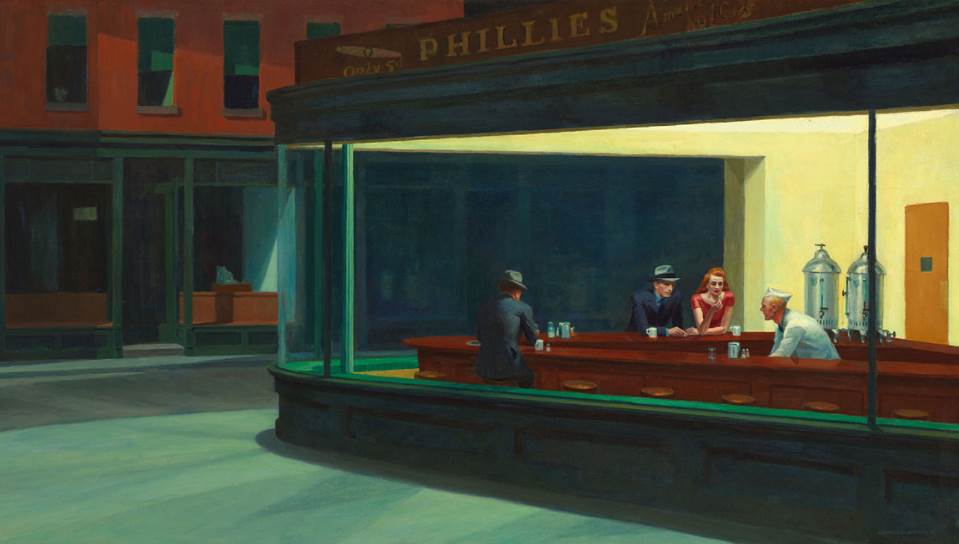
5. One element in the painting was a novel feature during the 1920s
One of the most remarkable facts about Hopper’s Automat is that he made the woman’s legs the brightest spot in the entire composition.
This doesn’t appear to be a big thing among modern-day viewers but society has changed quite a bit.
Displaying a woman’s legs so prominently was still taboo at the time and this transformed the girl into an object of desire for contemporary viewers.
The viewing point of the painting is just to the right of the table where the woman is sitting. This notion turns the viewer into a voyeur who is secretly spying on this beautiful girl.
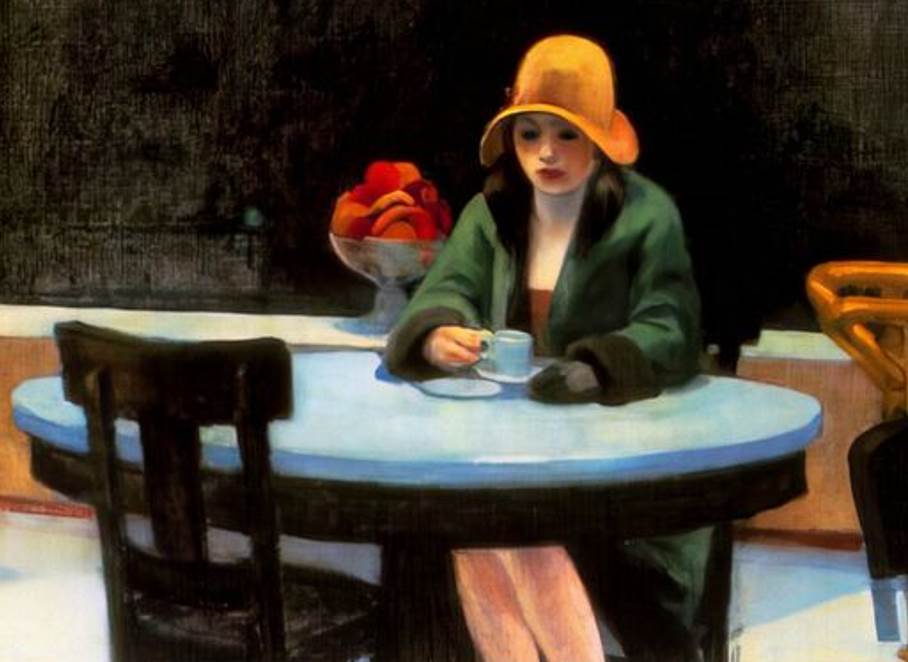
6. The painting sold for a handsome amount less than 2 months after it was exhibited
Shortly after he exhibited his first major works for the first time at the Brooklyn Museum, Hopper earned his first solo exhibition. This happened in 1924 at the art gallery of his dealer Frank Rehn.
Automat was exhibited at the artist’s second solo exhibition at the Rehn Galleries in New York City, an event that took place on Valentine’s day of 1927.
By April of the same year, the painting was sold for $1,200, the equivalent of almost $19,000 in recent times.
While this was great money for the emerging artist at the time, it’s nothing compared to what his paintings are selling for today.
In November 2018, his painting titled Chop Suey (1929) sold for the sum of $91.9 million to a private collector at Christie’s, a record amount for a painting by Hopper.
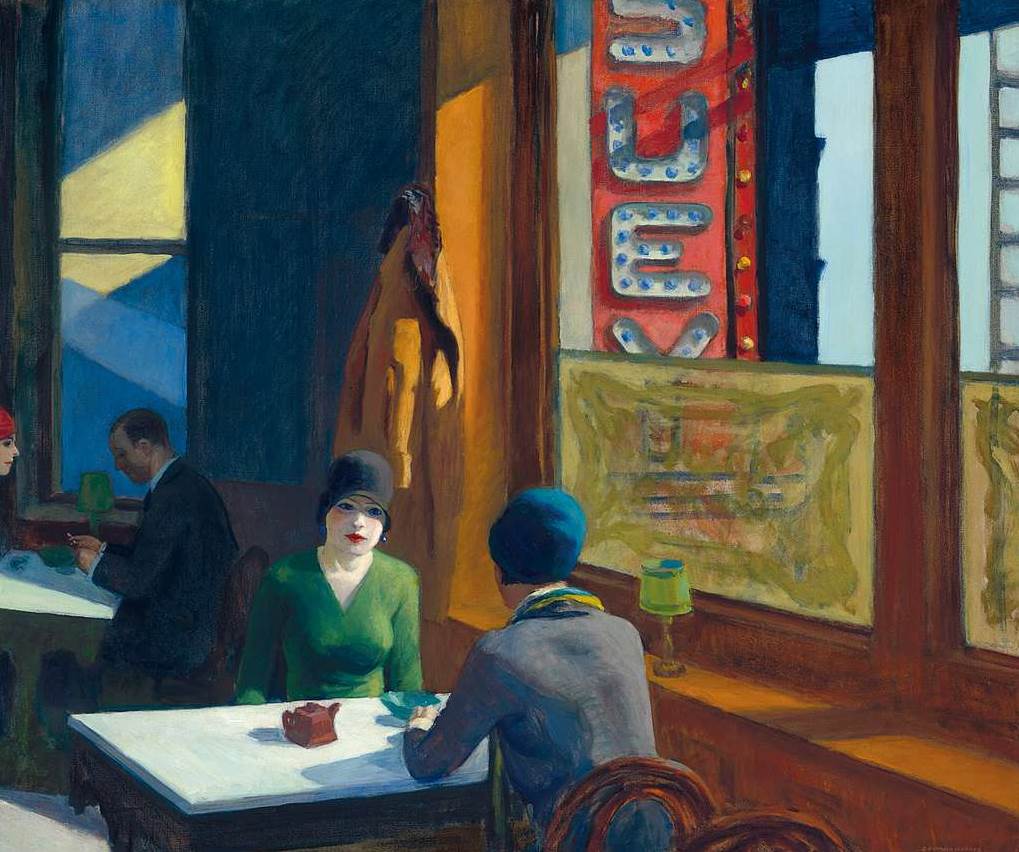
7. How Big is Automat by Edward Hopper?
Most of the artist’s most famous paintings are relatively humble in size and this also applies to the work described in this article.
Automat by Edward Hopper is an oil on canvas painting with dimensions of 71.4 × 91.4 centimeters (28 × 36 inches).
8. Where is the painting located today?
If you want to admire Hopper’s masterpiece then you have to head over to one of the most popular museums in Iowa.
The painting is on public display at the Des Moines Art Center in Des Moines, the capital and most populous city in this Midwestern American state.

